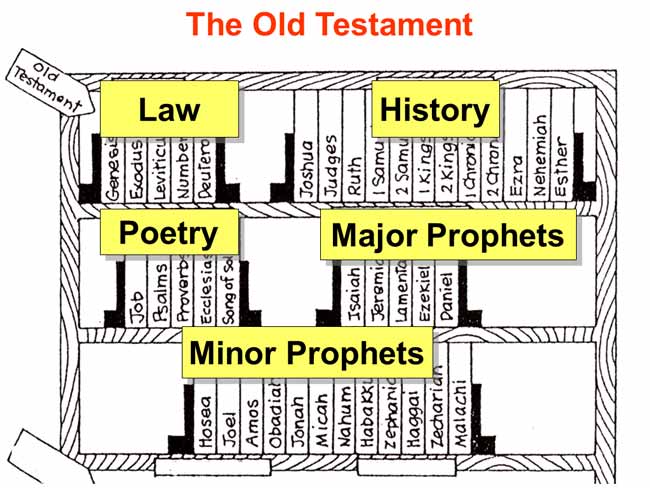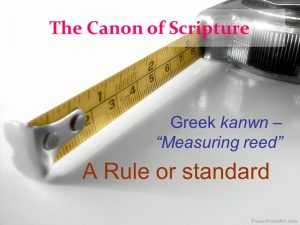What sort of books are in the Bible? What are the Old and New Testaments? Who chose the books to include? What are “verses”?
This post is part of a series on the Bible
♦ 2 Reasons To Believe The Bible: Its Harmony and Accurate History
♦ Another Reason to Believe the Bible: Its Accurate Science
♦ A Further Reason to Trust the Bible: Its Accurate Translation
♦ Evidence that the Bible is Inspired by God: Fulfilled Prophecy
♦ More evidence that the Bible is Inspired by God: Its Miraculous Protection
♦ Why the Bible is worth reading today: Its Relevance and Supernatural Impact
♦ What is in the Bible and Why? – This post
♦ The Books Not in the Bible : The Apocrypha and Gnostic writings
All those questions are answered in this post about the structure of the Bible
The Bible is a Library
The Bible is bound as one book, but it is actually made up of 66 books within one cover. It is a portable library. Like any library, the Bible is divided into sections for different subjects.
There are 2 main sections, The Old Testament and The New Testament.
The word ‘Testament’ means promise or agreement.
The Old Testament
The Old Testament is made up of 39 books. Among other things it contains the history of the Jewish people and the promises made by God, originally to the nation of Israel.
He promised that one day, through the Jewish nation, he would send a Saviour who would take the punishment for the sin of the whole world. His title was Messiah.
Then Jesus came. He is the only one who has ever fitted, to the smallest detail, the description of the Messiah, made by God through his prophets in the Old Testament. This detailed fulfilment of Messianic prophecies is outlined in another post.
The New Testament
After he died, Jesus defeated death, came alive again and for some weeks was seen by hundreds of people on many occasions. Then he returned to heaven. His followers wrote books, telling all they knew about Jesus. These books were the gospels. They also wrote about what happened to Jesus’ followers in the next 50 or 60 years.
All these, together with the gospels, formed The New Testament. This section of the Bible is all about a new promise, agreement or testament, which God had made with the whole world, not only the Jews.
We know this because of what the Bible says in Ephesians 3:6.
Both Gentiles and Jews who believe the Good News share equally in the riches inherited by God’s children. Both are part of the same body, and both enjoy the promise of blessings because they belong to Christ Jesus” (Eph. 3:6 – New Living Translation).
The differences between the two Testaments
The Old Testament agreement meant that salvation depended on the people keeping God’s Law perfectly or, if they did wrong, making animal sacrifices to gain forgiveness from God.

The new promise in the New Testament was clear.
- Animal sacrifices are no longer required.
God had sent his Son, Jesus Christ, to be the perfect sacrifice for our sin. Jesus died to take the punishment we deserve for our sin. - The sacrifice did not need to be repeated.
Because no one could keep all the Law perfectly, in Old Testament times repeated sacrifices were necessary. But the sacrifice that Jesus made was sufficient for all time. - But Christ died once and for all time — and that one death was sufficient to pay the penalty for the sin of the world.
When a person repents of their sin, and asks Jesus to forgive them, trusting that his death was sufficient, they are forgiven.
The New Testament tells about this new promise and agreement between God and us. For example:
“Repent, then, and turn to God, so that your sins may be wiped out” (Acts 3:19).
The promises in the Old Testament which speak of Messiah coming to bring forgiveness are all fulfilled in the New Testament, through the coming of Jesus Christ. Speaking of both testaments there is an old saying:
“The New is in the Old Concealed; the Old is in the New Revealed”.
The promises and “pictures” in the Old Testament are more fully understood when we see their fulfilment in the New Testament.
For example: Abraham sacrificing Isaac foreshadows the sacrifice of Christ.
In the OT account of how God asked Abraham to sacrifice his son Isaac, Abraham in faith says to his child, “God will provide the lamb”. This foreshadows and illustrates the coming sacrifice of Jesus Christ, who is also known as “the Lamb of God”.
We deserve to be punished, but Jesus Christ died in our place. He was the sacrifice that God provided for us.

The Bible is a library with books covering different subjects
Within these two main sections, or Testaments, there are several other divisions, according to the subjects covered by the individual books.

Old Testament Subjects
5 Books of Law
12 Books of History
5 Books of Poetry
5 Books by Major Prophets (Longer)
12 Books by Minor Prophets (Shorter)
New Testament Subjects
5 Books of History about Jesus and his followers
9 Epistles (Letters) to named churches
4 Epistles (Letters) to named individuals
8 Epistles (Letters) to general readers
1 Book of Prophecy.
The Bible is packed with so much of value and interest!
In the Bible there are laws to help us live right.
There are beautiful songs, poetry and letters. All help us understand about God.
There are accounts of farmers and bandits , poor shepherds and fabulously rich kings, of fierce battles and joyful parties, shipwrecks and survival, adventurous journeys and awesome miracles.
The Bible is totally honest about the people it speaks of. Even when they are heroes, their flaws, human failings and sins are also seen. But God loved them. They were real people, with real problems, to which God offered real solutions.
Why are these particular books in the Bible?
The Canon of Scripture
The books which make up the Bible are known as the Canon of Scripture.
The word “canon” comes from Greek word kanwn (pronounced kan-óhn), which means a measuring reed. A type of cane that grew in the Jordan Valley was very straight, light, and was cut and used for measuring rods. In Bible days builders used them.
They were of a standard length, usually about 10ft (just over 3 metres) long.
In Rev 11:1 John, in vision, is given “a measuring rod like a staff”.
The word kanwn later came to refer to any standard — something right and true.
This is why the word kanwn, or in English “canon”, was chosen to refer to the Books of the Bible—those which met the standard of the New Testament Church.
The Canon of Scripture was formed for several reasons.
To prevent false teaching
Books were being produced which claimed to be Scripture, although their message was not in line with that of the teachings of the Apostles. The canon prevented the church falling into error.
To prevent biased teaching
Some people were forming lists of books which were biased in favour of their own doctrine which did not meet the criteria set by the church. The canon meant that the church maintained the full scope of the doctrine of Christ and the Apostles.

Who decided what books went into the canon?
Old Testament Canon
There was no formal agreement about the Old Testament canon, because there didn’t need to be. Everyone accepted the books in the Old Testament as we have them now. But there came a time when the canon was “closed”. The Jews accepted that no other books would be added to the Hebrew Bible.
They had two main rules for selecting books for the canon.
- They must be written by prophets known to be inspired and accurate. This included books written between the time of Moses and the reign of King Artaxerxes. After that era, there were no prophets to bring God’s message to the people.
- They must not contradict each other (and we have seen in a previous post that there is great unity across all the writers and books of the Old Testament).
New Testament Canon
There was no committee or council who sat down at a conference and sorted it all out. It took a long time to gradually select the library of books that we have today in the Bible. When various Councils did sit to discuss the canon, all they did was recognise what had already been the long-standing acceptance and practice of the church. The Holy Spirit had been drawing the Christians to regularly read certain books and benefit from them.
To be included in the New Testament Canon of Scripture a book had to meet three standards:
- The BOOK must have been inspired by the Holy Spirit.
- Its AUTHOR must either be an Apostle or a person with very close links to the Apostles.
- The MESSAGE of the book must be in line with the known teachings of Jesus and of the Apostles.
Where did the Bible chapters and verses come from?
Chapters and verses were a late addition to Bible manuscripts.
There were no chapters and verses in the original manuscripts. They did not appear in an English language Bible until the 16th century, when the Geneva Bible was printed. From then on these chapter and verse divisions became standard.
Chapter and verse divisions are not divinely inspired.
Though they are very helpful in referring to parts of the Scriptures, occasionally a chapter division may break the flow of a story, or a reasoned argument. This shows that chapters and verses are usually just a human device.
One exception is the Book of Psalms.
The Psalms were mostly individual units from the beginning.
It is also interesting to note that the little introductory remarks that appear before the first verse in a Psalm are generally thought to have been part of the original, and therefore authoritative.
Here is an example from the opening of one Psalm.
Psalm 52
For the director of music. A maskil of David. When Doeg the Edomite had gone to Saul and told him: “David has gone to the house of Ahimelek.”
1 Why do you boast of evil, you mighty hero?
Why do you boast all day long,
you who are a disgrace in the eyes of God?
2 You who practice deceit,
your tongue plots destruction;
it is like a sharpened razor.
The opening comments tell us:
- Who the Psalm was for—the director of music
- What type it was — a maskil (we are not sure what that was, but it is supposed that it was a musical term)
- Who wrote it — David
- What occasion inspired it — Doeg the Edomite had gone to David’s enemy Saul and told him where David was.
The Bible is a unique book, or rather we should say “library of books”. God has used the early church, and his miracle-working power to preserve this book . The Canon of Scripture was a vital means of ensuring that the church was kept free from error.
The Bible is for everyone
It doesn’t matter:
- Who we are
- What we have done
- If we are happy
- Or if we are troubled
- Whether we read with our a family
- Or alone
The Bible is available for us all. It is relevant to everyone, of every age and culture. It is God’s personal message to each one of us.
The teaching in this post is available in a Free PowerPoint presentation with 32 slides
Full presenter’s notes are included and you are free to adapt and develop them to suit your group. They are marked with clear cues indicating when you should advance to the next slide.
To download these files, Right-Click on the link and save the file to your harddrive.

